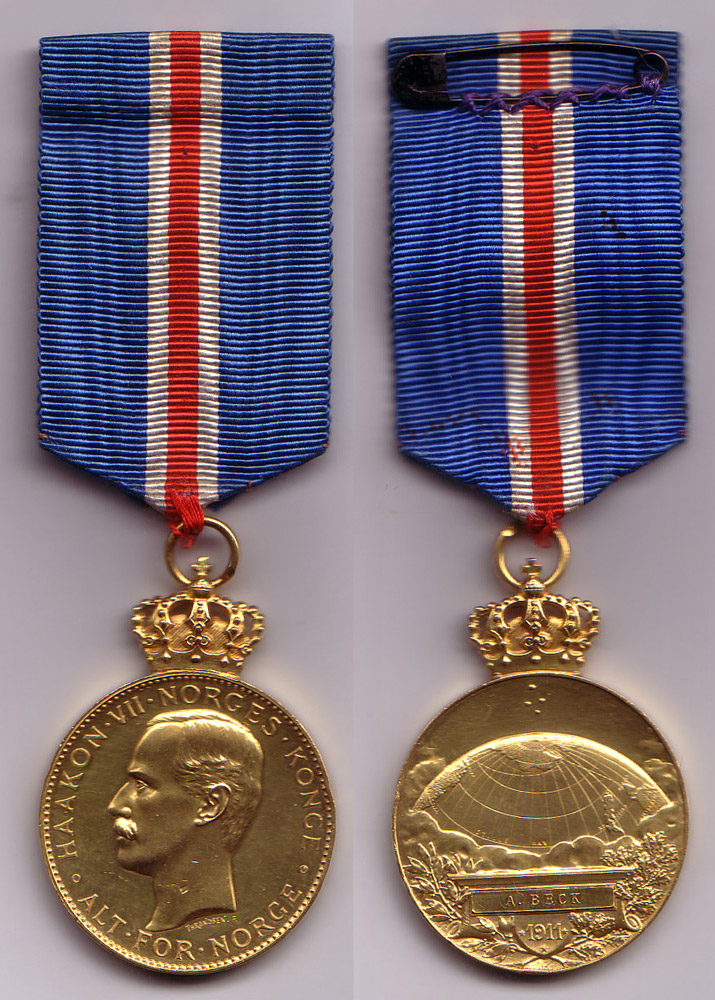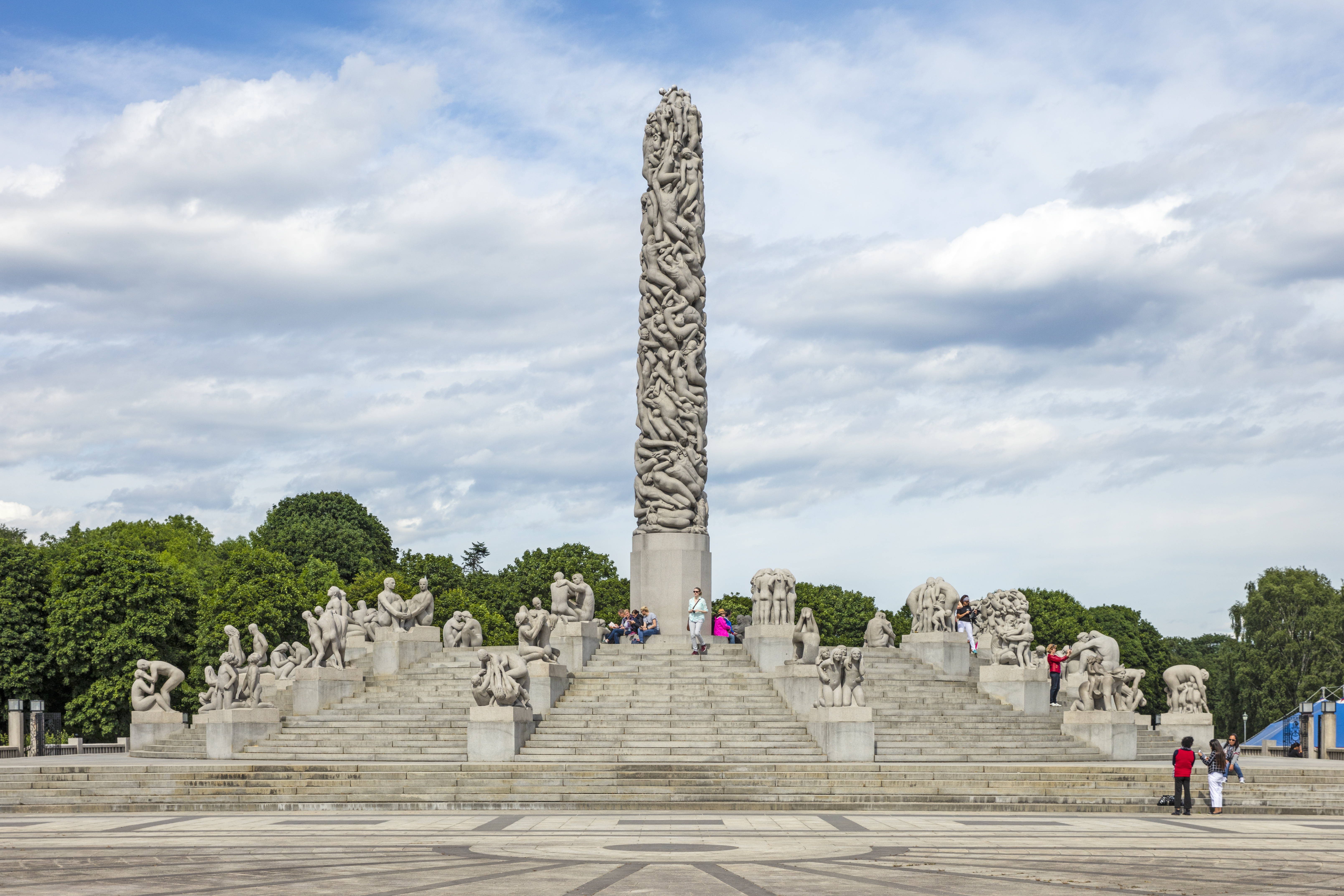|
Ivar Throndsen
Ivar Throndsen (March 29, 1853 – January 18, 1932) was a Norwegian engraver. Throndsen was born in Nes, Akershus. He became an apprentice to the goldsmith Jacob Tostrup in Christiania (now Oslo) in 1870, and at the same time studied at the Norwegian National Academy of Craft and Art Industry under the sculptor Julius Middelthun. He received a job at the Royal Norwegian Mint in Kongsberg in 1879 and, after finishing his studies, started working there in 1880. He produced nearly 500 medals, tokens, and badges during his career. Throndsen died in Kongsberg. His work was catalogued by Ragnar Støren and Hans Holst in 1937.Støren, Ragnar & Hans Holst. 1937. ''Myntgravør Ivar Throndsens medaljer, jetonger og merker''. Oslo: I kommisjon hos H. Aschehoug. Selected works * H. M. The King's Commemorative Medal * H. M. The King's Gold Medal * South Pole Medal * Norwegian Constitution Day medals, 1884–1920 * 1902 Nobel Peace Prize Medal based on a model by the sculptor Gustav Vig ... [...More Info...] [...Related Items...] OR: [Wikipedia] [Google] [Baidu] |
South Pole Medal
The South Pole Medal ( no, Sydpolsmedaljen) or Medal Commemorating the 1910–1911 ''Fram'' Expedition to the South Pole (''Medalje til erindring om "Frams" ekspedisjon til Sydpolen 1910–1911'') is a Norwegian medal established by Haakon VII of Norway on August 20, 1912 to recognize participants in Roald Amundsen's South Pole expedition.Lampe, C. (ed.). 1927. ''Norges statskalender for året 1927''. Oslo: H. Aschehoug & Co (W. Nygaard), pp. 1053–1054. The medal was awarded to participants in the exhibition on the day it was instituted. The medal was designed by the engraver Ivar Throndsen. Description The South Pole Medal was cast in gold, silver, and bronze,Støren, Ragnvald, & Hans Jørgen Holst. 1937. ''Myntgravør Ivar Throndsens medaljer, jetonger og merker''. Oslo : I kommisjon hos H. Aschehoug, p. 149. and it was awarded in gold.Lampe, C. (ed.). 1913. ''Norges statskalender for aaret 1913''. Kristiania: Aschehoug & Co (W. Nygaard), pp. 1093–1094. The obverse depicts Ki ... [...More Info...] [...Related Items...] OR: [Wikipedia] [Google] [Baidu] |
1853 Births
Events January–March * January 6 – Florida Governor Thomas Brown signs legislation that provides public support for the new East Florida Seminary, leading to the establishment of the University of Florida. * January 8 – Taiping Rebellion: Zeng Guofan is ordered to assist the governor of Hunan in organising a militia force to search for local bandits. * January 12 – Taiping Rebellion: The Taiping army occupies Wuchang. * January 19 – Giuseppe Verdi's opera ''Il Trovatore'' premieres in performance at Teatro Apollo in Rome. * February 10 – Taiping Rebellion: Taiping forces assemble at Hanyang, Hankou, and Wuchang, for the march on Nanjing. * February 12 – The city of Puerto Montt is founded in the Reloncaví Sound, Chile. * February 22 – Washington University in St. Louis is founded as Eliot Seminary. * March – The clothing company Levi Strauss & Co. is founded in the United States. * March 4 – Inauguration of Franklin Pierce as 14th President of the ... [...More Info...] [...Related Items...] OR: [Wikipedia] [Google] [Baidu] |
People From Nes, Akershus
A person ( : people) is a being that has certain capacities or attributes such as reason, morality, consciousness or self-consciousness, and being a part of a culturally established form of social relations such as kinship, ownership of property, or legal responsibility. The defining features of personhood and, consequently, what makes a person count as a person, differ widely among cultures and contexts. In addition to the question of personhood, of what makes a being count as a person to begin with, there are further questions about personal identity and self: both about what makes any particular person that particular person instead of another, and about what makes a person at one time the same person as they were or will be at another time despite any intervening changes. The plural form "people" is often used to refer to an entire nation or ethnic group (as in "a people"), and this was the original meaning of the word; it subsequently acquired its use as a plural form of ... [...More Info...] [...Related Items...] OR: [Wikipedia] [Google] [Baidu] |
Norwegian Engravers
Norwegian, Norwayan, or Norsk may refer to: *Something of, from, or related to Norway, a country in northwestern Europe *Norwegians, both a nation and an ethnic group native to Norway *Demographics of Norway *The Norwegian language, including the two official written forms: **Bokmål, literally "book language", used by 85–90% of the population of Norway **Nynorsk, literally "New Norwegian", used by 10–15% of the population of Norway *The Norwegian Sea Norwegian or may also refer to: Norwegian *Norwegian Air Shuttle, an airline, trading as Norwegian **Norwegian Long Haul, a defunct subsidiary of Norwegian Air Shuttle, flying long-haul flights *Norwegian Air Lines, a former airline, merged with Scandinavian Airlines in 1951 *Norwegian coupling, used for narrow-gauge railways *Norwegian Cruise Line, a cruise line *Norwegian Elkhound, a canine breed. *Norwegian Forest cat, a domestic feline breed *Norwegian Red, a breed of dairy cattle *Norwegian Township, Schuylkill County, ... [...More Info...] [...Related Items...] OR: [Wikipedia] [Google] [Baidu] |
Gustav Vigeland
Gustav Vigeland (11 April 1869 – 12 March 1943), born as Adolf Gustav Thorsen, was a Norwegian sculptor. Gustav Vigeland occupies a special position among Norwegian sculptors, both in the power of his creative imagination and in his productivity. He is most associated with the Vigeland installation (''Vigelandsanlegget'') in Frogner Park, Oslo. He was also the designer of the Nobel Peace Prize medal. Early life Adolf Gustav Thorsen was born to a family of craftsmen, just outside Halse og Harkmark, a former municipality in Mandal. His parents were Elesæus Thorsen (1835–1886), a cabinetmaker and Anne Aanensdatter (1835–1907). He had three brothers, of whom Emanuel Vigeland (originally Thorsen) became a noted artist. As a youth, he was sent to Oslo where he learned wood carving at a local school. However, the sudden death of his father compelled him to move back to Mandal to help his family. Gustav lived for a time with his grandparents on a farm called Mjunebrokka in Vi ... [...More Info...] [...Related Items...] OR: [Wikipedia] [Google] [Baidu] |
Nobel Peace Prize
The Nobel Peace Prize is one of the five Nobel Prizes established by the will of Swedish industrialist, inventor and armaments (military weapons and equipment) manufacturer Alfred Nobel, along with the prizes in Nobel Prize in Chemistry, Chemistry, Nobel Prize in Physics, Physics, Nobel Prize in Physiology or Medicine, Physiology or Medicine and Nobel Prize in Literature, Literature. Since March 1901, it has been awarded annually (with some exceptions) to those who have "done the most or the best work for fraternity between nations, for the abolition or reduction of standing armies and for the holding and promotion of peace congresses". In accordance with Alfred Nobel's will, the recipient is selected by the Norwegian Nobel Committee, a five-member committee appointed by the Parliament of Norway. Since 2020 the prize is awarded in the University of Oslo Faculty of Law, Atrium of the University of Oslo, where it was also awarded 1947–1989; the Abel Prize is also awarded in the ... [...More Info...] [...Related Items...] OR: [Wikipedia] [Google] [Baidu] |
Norwegian Constitution Day
Constitution Day is the national day of Norway and is an official public holiday observed on 17 May each year. Among Norwegians, the day is referred to as ''Syttende Mai'' ("Seventeenth of May"), ''Nasjonaldagen'' ("National Day"), or ''Grunnlovsdagen'' ("Constitution Day"), although the latter is less frequent.Norway's national day – Hurray! It's the 17th of May www.visitnorway.com Historical background The Constitution of Norway was signed at |
Kongsberg
Kongsberg () is a historical mining town and municipality in Buskerud, Viken county, Norway. The city is located on the river Numedalslågen at the entrance to the valley of Numedal. Kongsberg has been a centre of silver mining, arms production and forestry for centuries, and is the site of high technology industry including the headquarters of Norway's largest defence contractor Kongsberg Gruppen. Kongsberg, formerly spelled Konningsberg ( "King's Mountain"), was developed as a mining city on the basis of the Kongsberg Silver Mines, founded by and named after King Christian IV of Denmark and Norway in 1624. The king invited German engineers and other specialists from Saxony and the Harz region to help build the mining company. As a mining city, Kongsberg had a distinct urban culture that contrasted with its surroundings, strongly influenced by the traditions of mining communities in Germany and where the German language was extensively used in mining business and for religious s ... [...More Info...] [...Related Items...] OR: [Wikipedia] [Google] [Baidu] |
Norwegians
Norwegians ( no, nordmenn) are a North Germanic ethnic group and nation native to Norway, where they form the vast majority of the population. They share a common culture and speak the Norwegian language. Norwegians are descended from the Norse of the Early Middle Ages who formed a unified Kingdom of Norway in the 9th century. During the Viking Age, Norwegians and other Norse peoples conquered, settled and ruled parts of the British Isles, the Faroe Islands, Iceland and Greenland. Norwegians are closely related to other North Germanic peoples and descendants of the Norsemen such as Danes, Swedes, Icelanders and the Faroe Islanders, as well as groups such as the Scots whose nation they significantly settled and left a lasting impact in. The Norwegian language is part of the larger Scandinavian dialect continuum of generally mutually intelligible languages in Scandinavia. Norwegian people and their descendants are found in migrant communities worldwide, notably in the Unit ... [...More Info...] [...Related Items...] OR: [Wikipedia] [Google] [Baidu] |
Royal Norwegian Mint
The Royal Norwegian Mint (Den Kongelige Mynt) is a mint in Norway responsible for producing coins of the Norwegian krone. Founded in 1686 as part of Kongsberg Silverworks, the mint was taken over by the Central Bank of Norway in 1962 and later incorporated in 2001 into a private company with the Central Bank of Norway remaining the sole owner and shareholder. The company was renamed "Det Norske Myntverket" (The Norwegian Mint). In 2003 the Central Bank sold its entire holding, 50% to Samlerhuset AS and 50% to the Mint of Finland The Mint of Finland ( fi, Suomen Rahapaja, sv, Myntverket i Finland) is the national mint of Finland. It was established by Alexander II of Russia in 1860 as the markka became the official currency of the Grand Duchy of Finland. The mint was first .... References {{Authority control Mints (currency) Manufacturing companies of Norway 1686 establishments in Norway ... [...More Info...] [...Related Items...] OR: [Wikipedia] [Google] [Baidu] |
Julius Middelthun
Julius Olavus Middelthun (3 July 1820 – 5 May 1886) was a Norwegian sculptor and educator. He is most associated with his busts and statues. Biography Middelthun was born at Kongsberg in Buskerud, Norway. He was the son of Georg Middelthun (1779–1831) and Maren Margrethe Jørgensen (1785–1829). His father was employed at the Royal Norwegian Mint at Kongsberg. As a young man he trained as a goldsmith before moving to Copenhagen to study with Herman Wilhelm Bissen. His ten years there were followed by eight years in Rome (1851-6), after which he returned to Norway. From 1869 until his death in 1886, Middlethun taught at the Royal Drawing School in Christiania (''Tegneskolen i Kristiania'') now the Norwegian National Academy of Craft and Art Industry in Oslo. Among his students were Erik Werenskiold (1883), Louis Moe and Theodor Kittelsen (1874), as well as Edvard Munch (1881) who painted the famous painting ''The Scream''. Selected works *Bust of ''Henrik Wergeland'', ... [...More Info...] [...Related Items...] OR: [Wikipedia] [Google] [Baidu] |



_1938.jpg)




